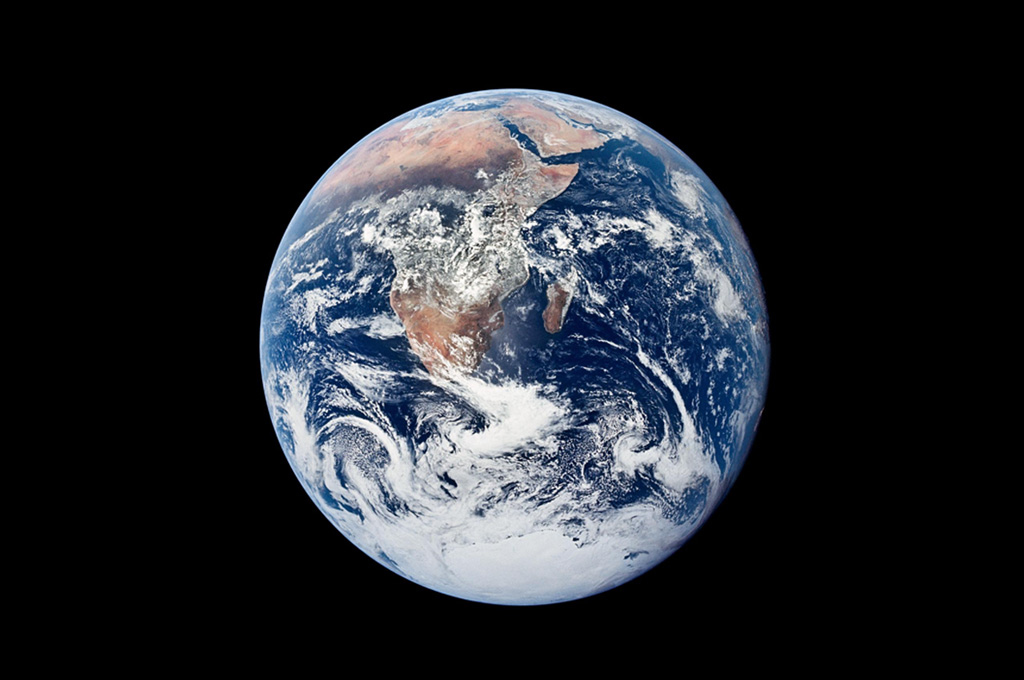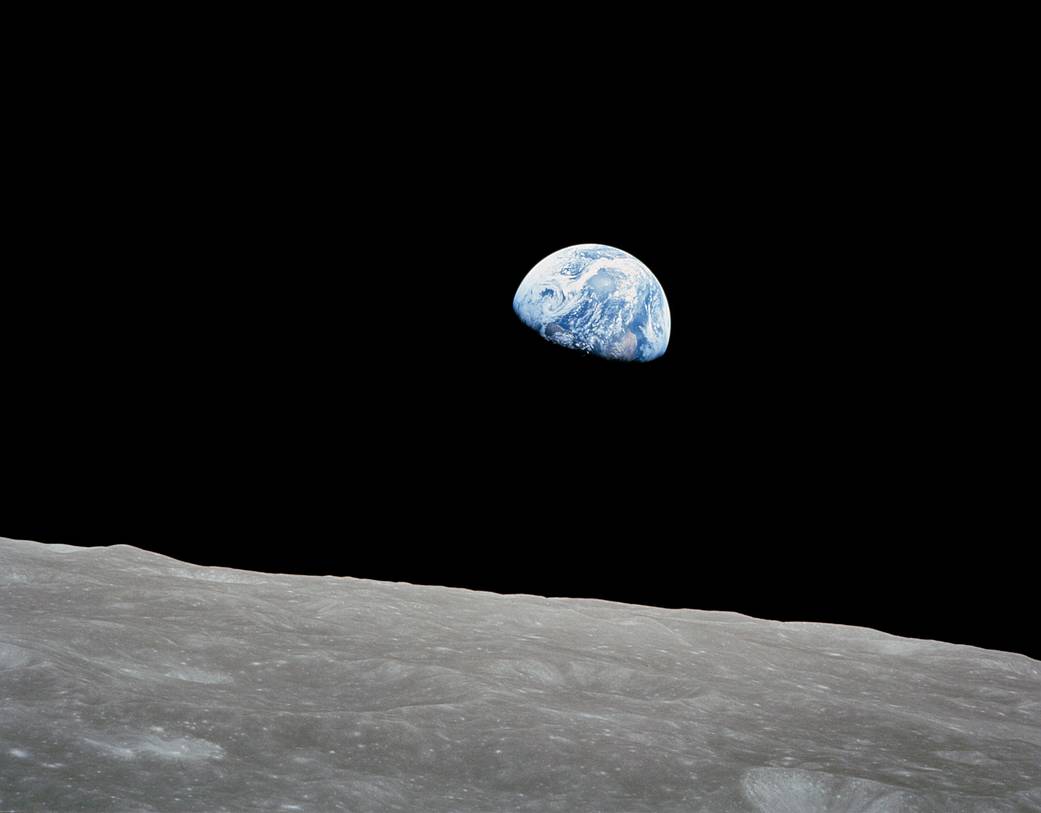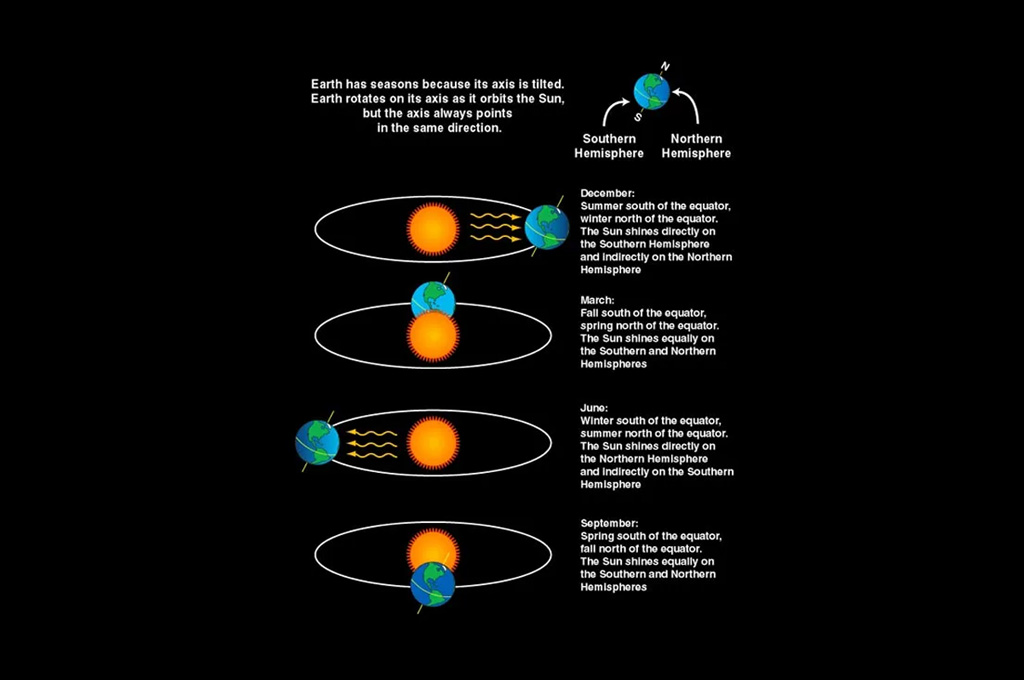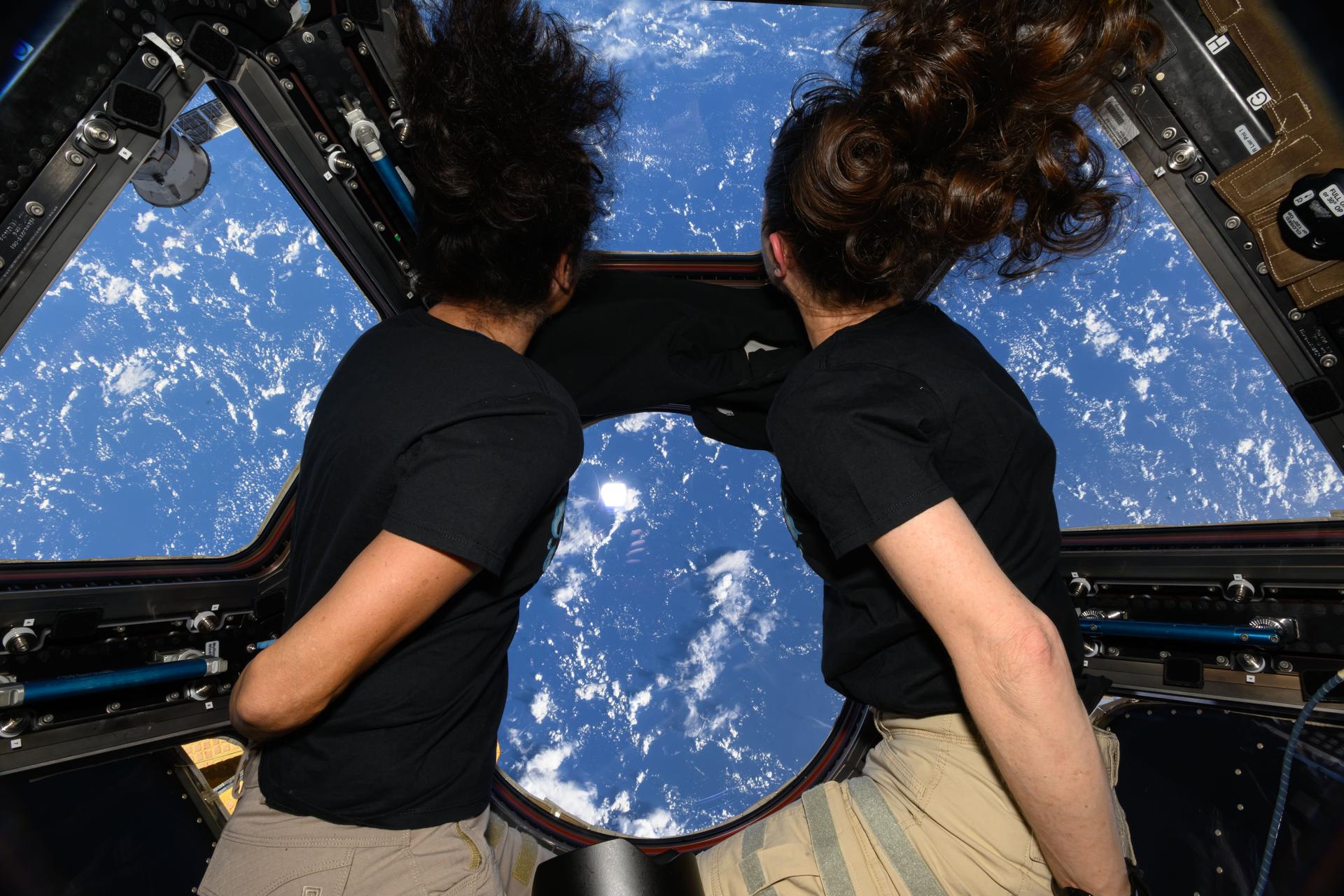This article is for students grades 5-8.
Earth is our home planet. Scientists believe Earth and its moon formed around the same time as the rest of the solar system. They think that was about 4.5 billion years ago. Earth is the fifth-largest planet in the solar system. Its diameter is about 8,000 miles. And Earth is the third-closest planet to the sun. Its average distance from the sun is about 93 million miles. Only Mercury and Venus are closer.
Earth has been called the “Goldilocks planet.” In the story of “Goldilocks and the Three Bears,” a little girl named Goldilocks liked everything just right. Her porridge couldn’t be too hot or too cold. And her bed couldn’t be too hard or too soft. On Earth, everything is just right for life to exist. It’s warm, but not too warm. And it has water, but not too much water.
Earth is the only planet known to have large amounts of liquid water. Liquid water is essential for life. Earth is the only planet where life is known to exist.
What Does Earth Look Like?
From space, Earth looks like a blue marble with white swirls and areas of brown, yellow, green and white. The blue is water, which covers about 71 percent of Earth’s surface. The white swirls are clouds. The areas of brown, yellow and green are land. And the areas of white are ice and snow.
The equator is an imaginary circle that divides Earth into two halves. The northern half is called the Northern Hemisphere. The southern half is called the Southern Hemisphere. The northernmost point on Earth is called the North Pole. The southernmost point on Earth is called the South Pole.
How Do We Know Earth Is Round?
Humans have known that Earth is round for more than 2,000 years! The ancient Greeks measured shadows during summer solstice and also calculated Earth’s circumference. They used positions of stars and constellations to estimate distances on Earth. They could even see the planet’s round shadow on the moon during a lunar eclipse. (We still can see this during lunar eclipses.)
Today, scientists use geodesy, which is the science of measuring Earth’s shape, gravity and rotation. Geodesy provides accurate measurements that show Earth is round. With GPS and other satellites, scientists can measure Earth’s size and shape to within a centimeter. Pictures from space also show Earth is round like the moon.
Even though our planet is a sphere, it is not a perfect sphere. Because of the force caused when Earth rotates, the North and South Poles are slightly flat. Earth’s rotation, wobbly motion and other forces are making the planet change shape very slowly, but it is still round.
How Does Earth Move?
Earth orbits the sun once every 365 days, or one year. The shape of its orbit is not quite a perfect circle. It’s more like an oval, which causes Earth’s distance from the sun to vary during the year. Earth is nearest the sun, or at “perihelion,” in January when it’s about 91 million miles away. Earth is farthest from the sun, or at “aphelion,” in July when it’s about 95 million miles away.
At the equator, Earth spins at just over 1,000 miles per hour. Earth makes a full spin around its axis once every 24 hours, or one day. The axis is an imaginary line through the center of the planet from the North Pole to the South Pole. Rather than straight up and down, Earth’s axis is tilted at an angle of 23.5 degrees.
Why Do We Have Day and Night?
At all times, half of Earth is lighted by the sun and half is in darkness. Areas facing toward the sun experience daytime. Areas facing away from the sun experience nighttime. As the planet spins, most places on Earth cycle through day and night once every 24 hours. The North Pole and South Pole have continuous daylight or darkness depending on the time of year.
Why Does Earth Have Seasons?
Earth has seasons because its axis is tilted. Thus, the sun’s rays hit different parts of the planet more directly depending on the time of year.
From June to August, the sun’s rays hit the Northern Hemisphere more directly than the Southern Hemisphere. The result is warm (summer) weather in the Northern Hemisphere and cold (winter) weather in the Southern Hemisphere.
From December to February, the sun’s rays hit the Northern Hemisphere less directly than the Southern Hemisphere. The result is cold (winter) weather in the Northern Hemisphere and warm (summer) weather in the Southern Hemisphere.
From September to November, the sun shines equally on both hemispheres. The result is fall in the Northern Hemisphere and spring in the Southern Hemisphere.
The sun also shines equally on both hemispheres from March to May. The result is spring in the Northern Hemisphere and fall in the Southern Hemisphere.
What Are Earth’s Different Parts?
Earth consists of land, air, water and life. The land contains mountains, valleys and flat areas. The air is made up of different gases, mainly nitrogen and oxygen. The water includes oceans, lakes, rivers, streams, rain, snow and ice. Life consists of people, animals and plants. There are millions of species, or kinds of life, on Earth. Their sizes range from very tiny to very large.
Below Earth’s surface are layers of rock and metal. Temperatures increase with depth, all the way to about 12,000 degrees Fahrenheit at Earth’s inner core.
Earth’s parts once were seen as largely separate from each other. But now they are viewed together as the “Earth system.” Each part connects to and affects each of the other parts. For example:
- Clouds in the air drop rain and snow on land.
- Water gives life to plants and animals.
- Volcanoes on land send gas and dust into the air.
- People breathe air and drink water.
Earth system science is the study of interactions between and among Earth’s different parts.
Why and How Does NASA Study Earth?
NASA studies Earth to learn about how the planet changes. Earth’s parts – land, air, water and life – are always changing. Some of the changes are natural and some are caused by humans. Scientists want to understand how Earth has changed in the past and how it is changing now. This information helps them predict how Earth might change in the future.
NASA studies Earth using satellites. Satellites look toward Earth from space. They take pictures of, and collect information about, all of Earth’s parts. NASA satellites are especially good for observing clouds, oceans, land and ice. They also measure gases in the atmosphere, such as ozone and carbon dioxide. They measure how much energy enters and leaves Earth’s atmosphere. And they monitor wildfires, volcanoes and their smoke.
Information gathered by NASA satellites helps scientists predict weather and climate. It also helps public health officials track disease and famine. It helps farmers decide when to plant crops and what kinds to plant. And it helps emergency workers respond to natural disasters.
The more people know about Earth and its current and predicted changes, the better decisions they can make.
More About Earth
Earth: NASA’s Space Place
Earth: 10 Need-To-Know Things
Earth Image Gallery
Earth: Our Home Planet
NASA’s Visible Earth
Earth Image of the Day
Why Are Planets Round?
Space Place in a Snap: The Solar System’s Formation
What Is a Satellite?
































